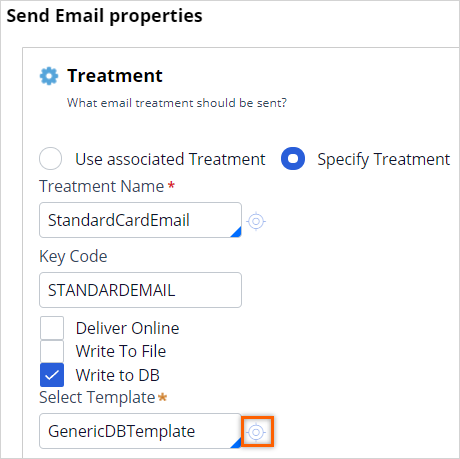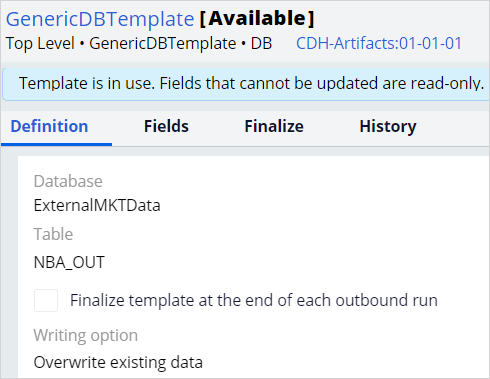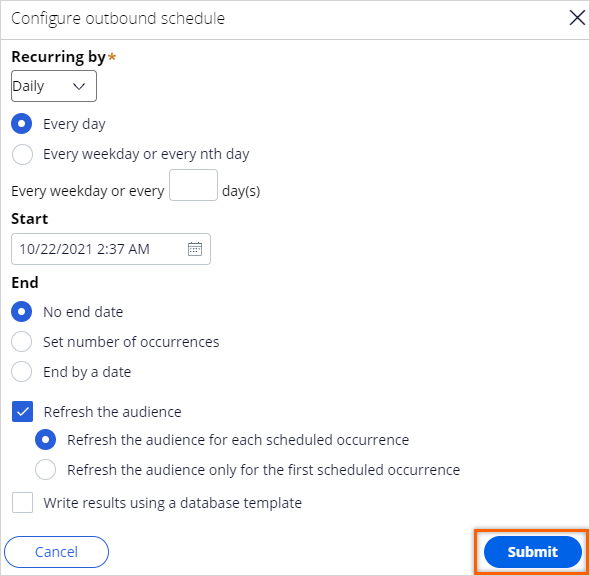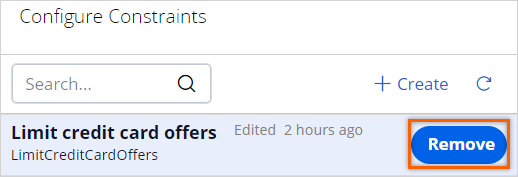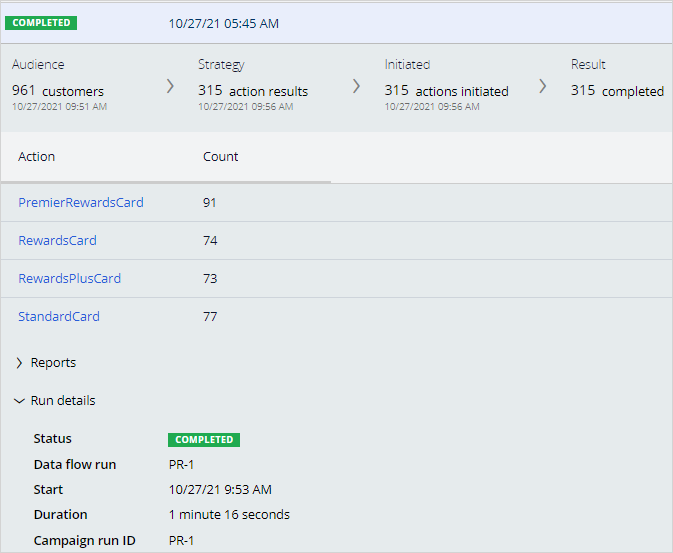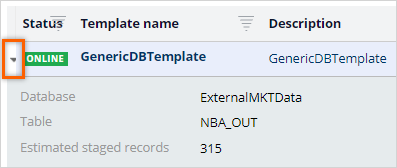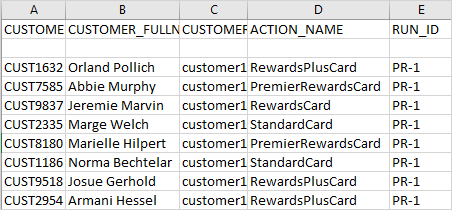
Sharing action details with a third-party email service provider
4 Tâches
15 mins
Scénario
U+ Bank, a retail bank, is currently promoting multiple credit card offers by sending emails to qualified customers.
However, to comply with the security and spamming regulations, the bank decides to use a third-party email delivery service instead of using the inhouse email server. As a result, the offer details must be written to the database. The action details are then be shared with a third-party email distributor.
Use the following credentials to log in to the exercise system:
| Role | User name | Password |
|---|---|---|
| Decisioning Architect | DecisioningArchitect | rules |
Your assignment consists of the following tasks:
Task 1: Configure the Email flow template action
Under Contents > Actions, configure the Email flow template action to write action details to a database table by using the Generic DB Template.
Note: As the Email flow template action flow is used in all the credit card actions, the actions will automatically be updated to use the DB template.
Task 2: Examine the referred database template
In the Email flow template action flow Send Email shape properties, open and examine the referred database template to understand and be able to explain the configurations to someone.
Task 3: Configure schedule run
In the Next-Best-Action Designer -> Channels tab, configure and run a schedule run to write action details to the database template.
Note: In the Recurrence section, ensure the Refresh the audience check box is selected. Also, ensure that the All outbound customers segment is selected as starting population.
You must unselect the added volume constraints before running the outbound schedule.
You must unselect the added volume constraints before running the outbound schedule.
Task 4: Verify that the action details are written to the database table
Under Contents > Templates, preview the Generic DB Template to confirm that the action details are written to the database table.
Note: The Preview option will download a .CSV file with actions details in it.
Présentation du défi
Détail des tâches
1 Configure the Email flow template action
- On the exercise system landing page, click Pega CRM suite.
- Log in to Customer Decision Hub as the Decisioning Architect with User name DecisioningArchitect and Password rules.
- From the navigation pane on the left, click Content > Actions.
- Locate and open the Email flow template action.
- In the Email flow template, click Check out to make changes.
- Click the Flow tab.
- Open the Send Email shape properties.
- Select Specify Treatment.
- In the Treatment Name list, select StandardCardEmail.
- Uncheck the Deliver Online check box.
- Check the Write to DB check box.
- In the Select Template list, select GenericDBTemplate.
- Click Submit.
Note: As the Email flow template action flow is used in all the credit card actions, the actions will automatically be updated to use the DB template.
- Check in to save the changes made.
2 Examine the referred database template
- In the Email flow template action, in the Flow tab, open the properties of the Send Email shape.
- To the right to the Select Template field, click the open icon.
- Examine the database details specified in the database template.
- Click the Fields tab to view the added customer and action details.
3 Configure a schedule run
- In Next-Best-Action Designer, click the Channels tab.
- In the Primary Schedule section, click the More icon, and then select Suspend to suspend the current scheduled run.
Note: If the Primary schedule is in Draft state, you can skip step 2.
- Click Edit to make changes to the run.
- Scroll down to the Primary Schedule section, and to the right of Recurrence, click the Gear icon to configure a schedule run frequency in the Configure outbound schedule window.
- In the Start field, enter today's date. Ensure that the time is current and in U.S. EST time zone.
- In the End section, ensure No end date option is selected.
- Ensure that the Refresh the audience check box is selected.
- Click Submit to save outbound schedule and close the Configure outbound schedule window.
- To the right of Volume constraints, click the Gear icon next to remove the added volume constraints.
- Remove Limit credit card offers.
- Click Apply.
- Click Save to save the changes made to the Channels tab.
- In the Channels tab, scroll down to the Primary Schedule section, and then click the More icon > Run to run the outbound schedule.
- Refresh the tab to view the latest status of the run.
- Once the run is complete, click COMPLETED to view the results.
Note: Your run results number might not match the numbers shown in the exercise steps as the segment used in the exercise system selects a random sample of customers.
4 Verify that the action details are written to the database table
- After test completion, navigate to Contents > Treatments.
- Click the Database tab.
- Optional: Click Refresh to view the database template.
- On the Database landing page, expand the Generic DB Template row to view the number of staging records. The records match the number of actions shown in the run statistics.
- In the Generic DB Template row, click the More icon and select Preview to download the CSV file.
- When prompted, use Microsoft Excel to open the output file (you may have to enable pop-ups on your browser).
Note: Notice that the number of records in the downloaded file matches the number of actions shown in the run statistics and the staging records. Also, you can verify that the Run_ID shown in the downloaded file is the same as the one displayed in the run details.
Ce défi vise à appliquer ce que vous avez appris dans le Module suivant :
Disponible dans la mission suivante :
If you are having problems with your training, please review the Pega Academy Support FAQs.
Want to help us improve this content?


